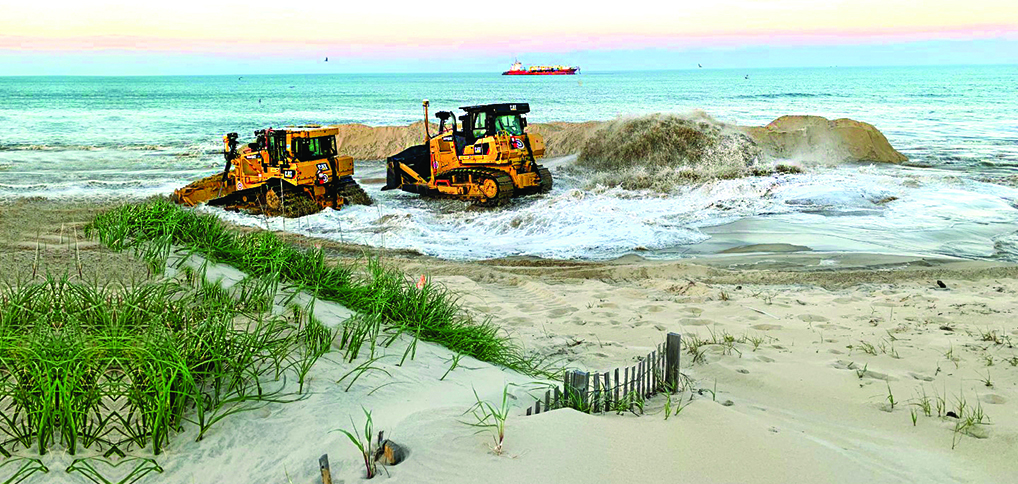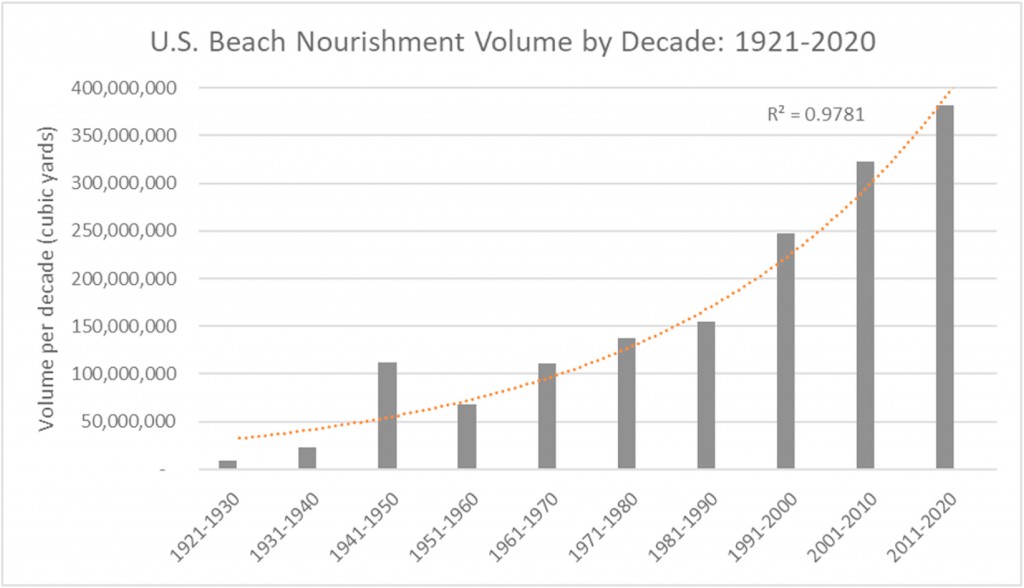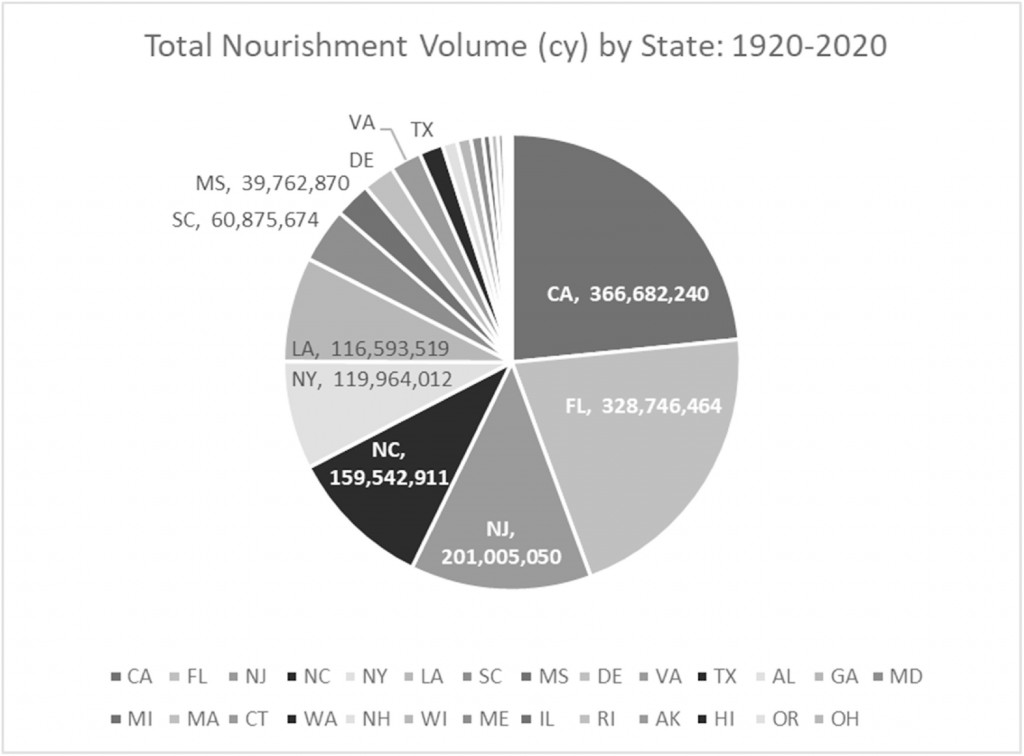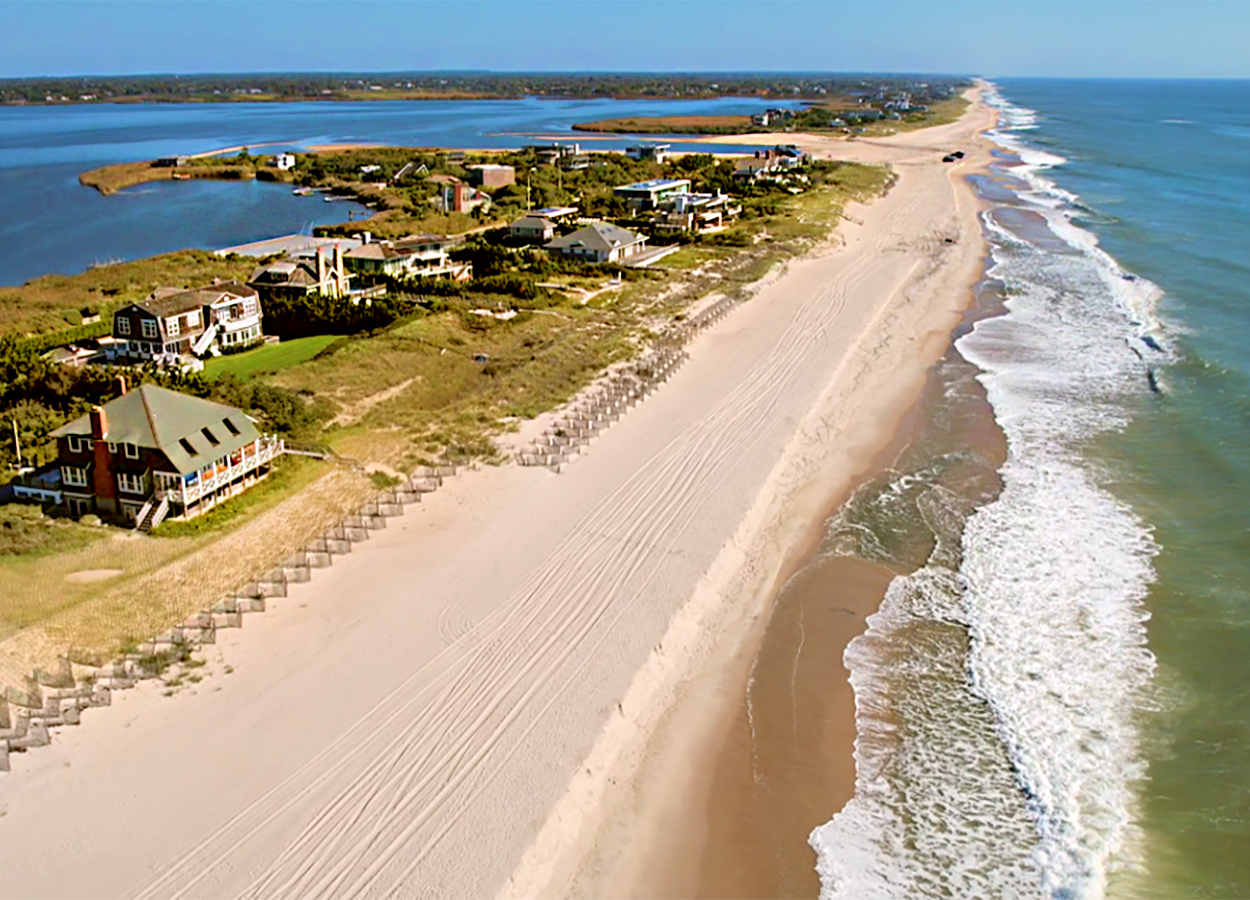
Fellow members of the American Shore & Beach Preservation Association (ASBPA) recently published a refereed article on the history of beach nourishment in the U.S. (Elko et al. 2021) in the Journal of Ocean & Coastal Management (JOCM – https://www.sciencedirect.com/science/article/pii/S0964569120303136?via%3Dihub). Here are some highlights.
Since the first nourishment at Coney Island, NY (1923), about 457 beach communities have received over 1.5 billion cubic yards (cy) of sand to restore and maintain their beaches. Miami Beach is one of the most famous, but nearly every coastal state has locales that use nourishment for shore protection and beach expansion. The majority of project sites have been nourished many times for a total of about 3,200 distinct events.
While the aggregate numbers are large, consider that these projects span one century and only cover a small percentage of the coastline. Remember, many miles of undeveloped beaches, national seashores, and stable shorelines have never needed nourishment.
The JOCM article reports increasing rates of nourishment, with a past decade average of 37 million cubic yards per year. This means the past 10 years account for 25% of all volumes placed since the 1920s.
Six states account for 83% of the total volume placed (California, Florida, New Jersey, North Carolina, New York, and Louisiana). South Carolina ranks 7th in terms of project volumes. While California and Florida placed the highest volumes (over twice that of the next four highest states), New Jersey has placed the most sand per foot of shoreline (~3 cy/ft/yr). North Carolina has placed an average of ~1.5 cy/ft/yr and South Carolina around 0.5 cy/ft/yr (similar to Florida, which has six times more coastline).
According to the authors, beach nourishment is increasing due to growing populations, sea level rise, and increased storminess. There is also more awareness of the benefits of nourishment for storm protection, expansion of environmental habitat, and increased recreational area.
See our companion website article on the impact of CSE projects on the National Nourishment Database.






